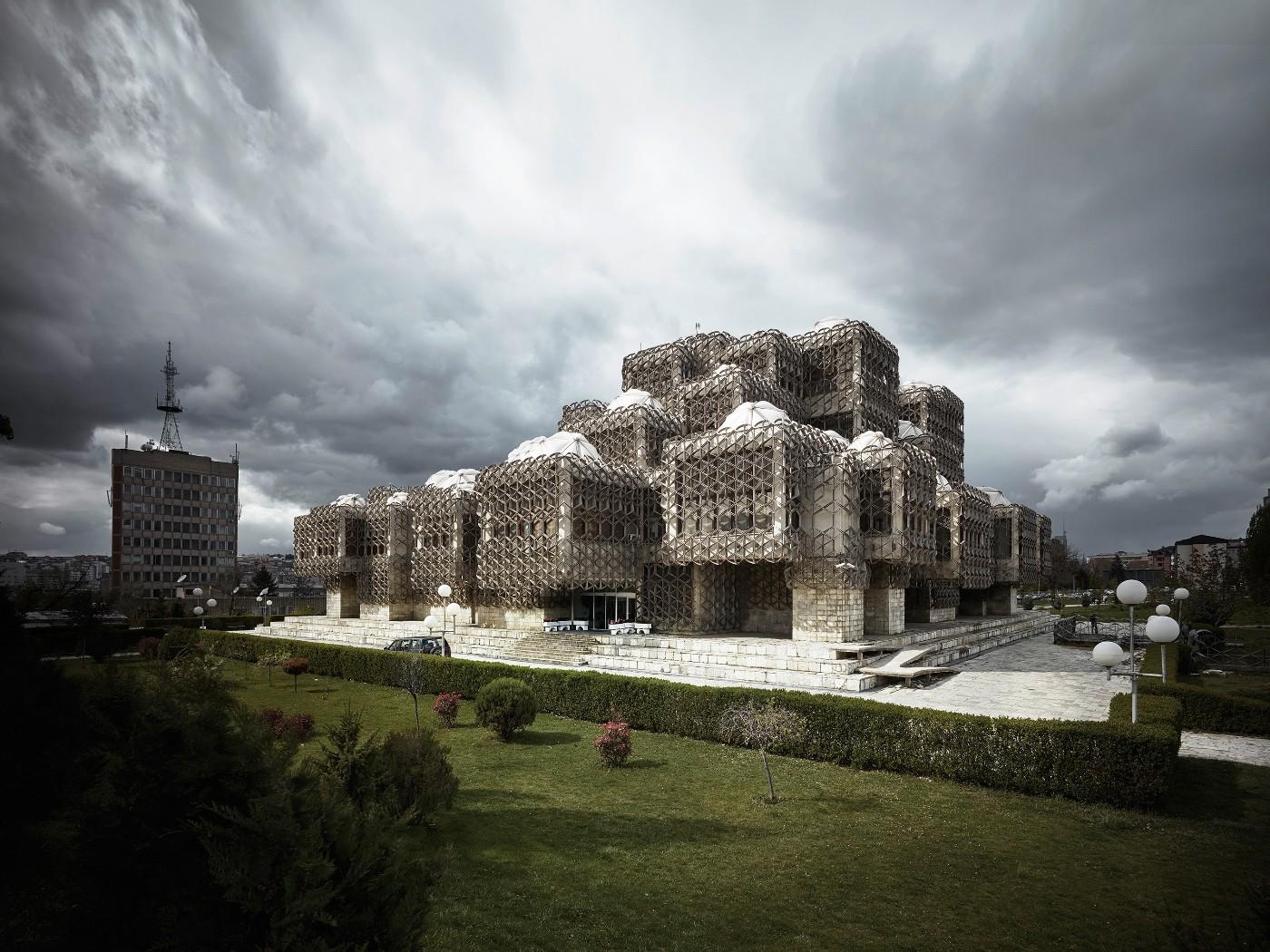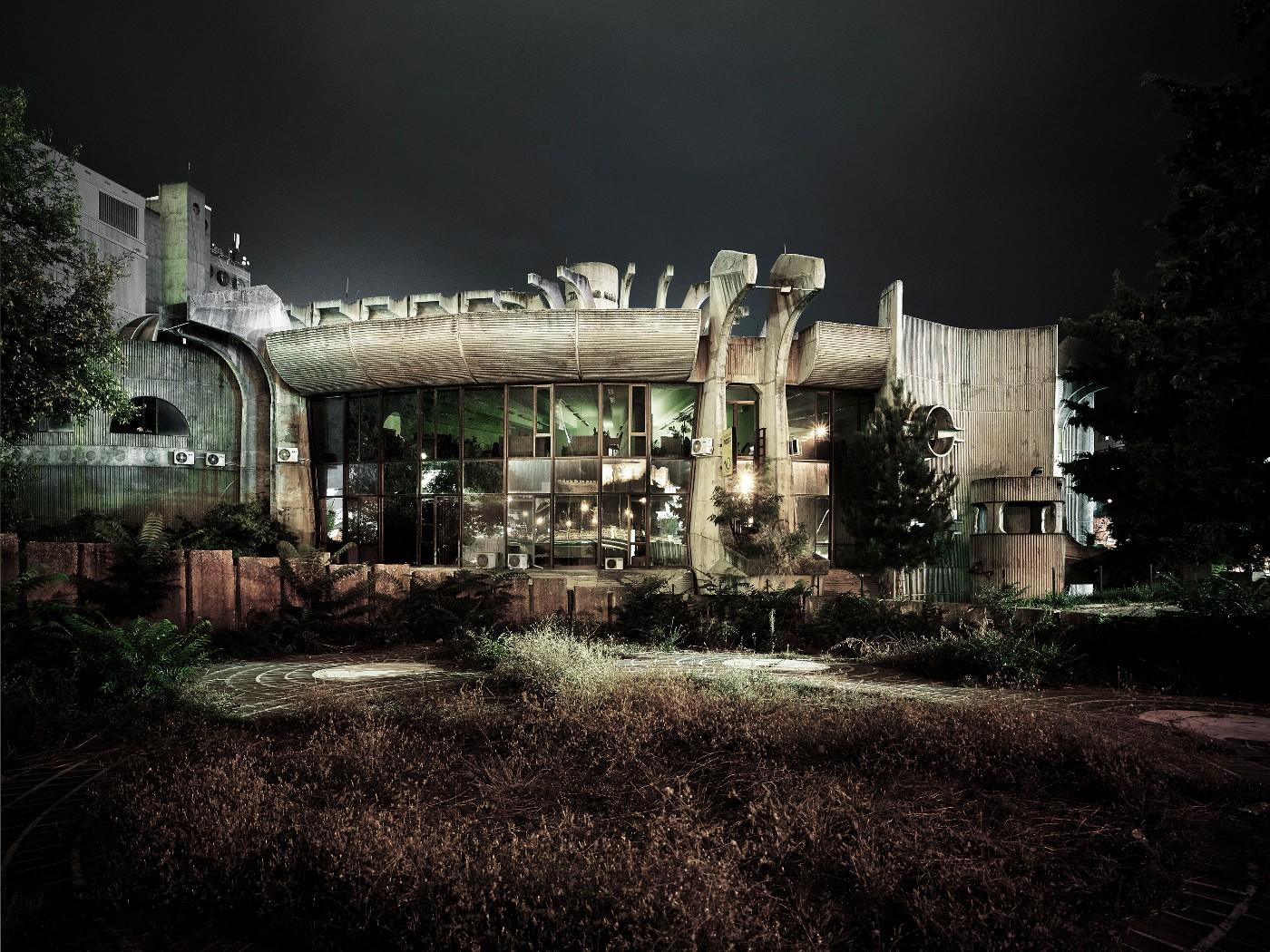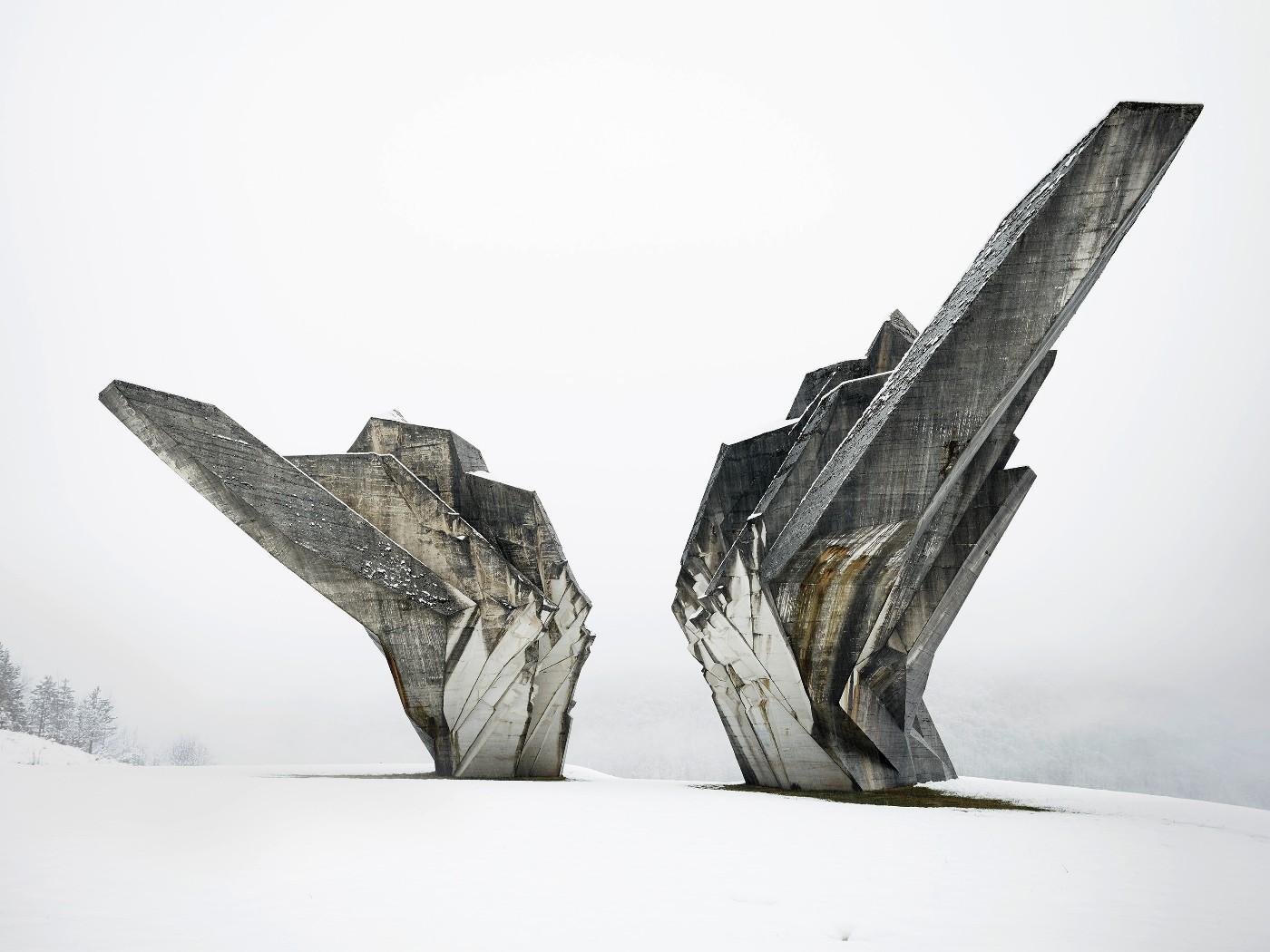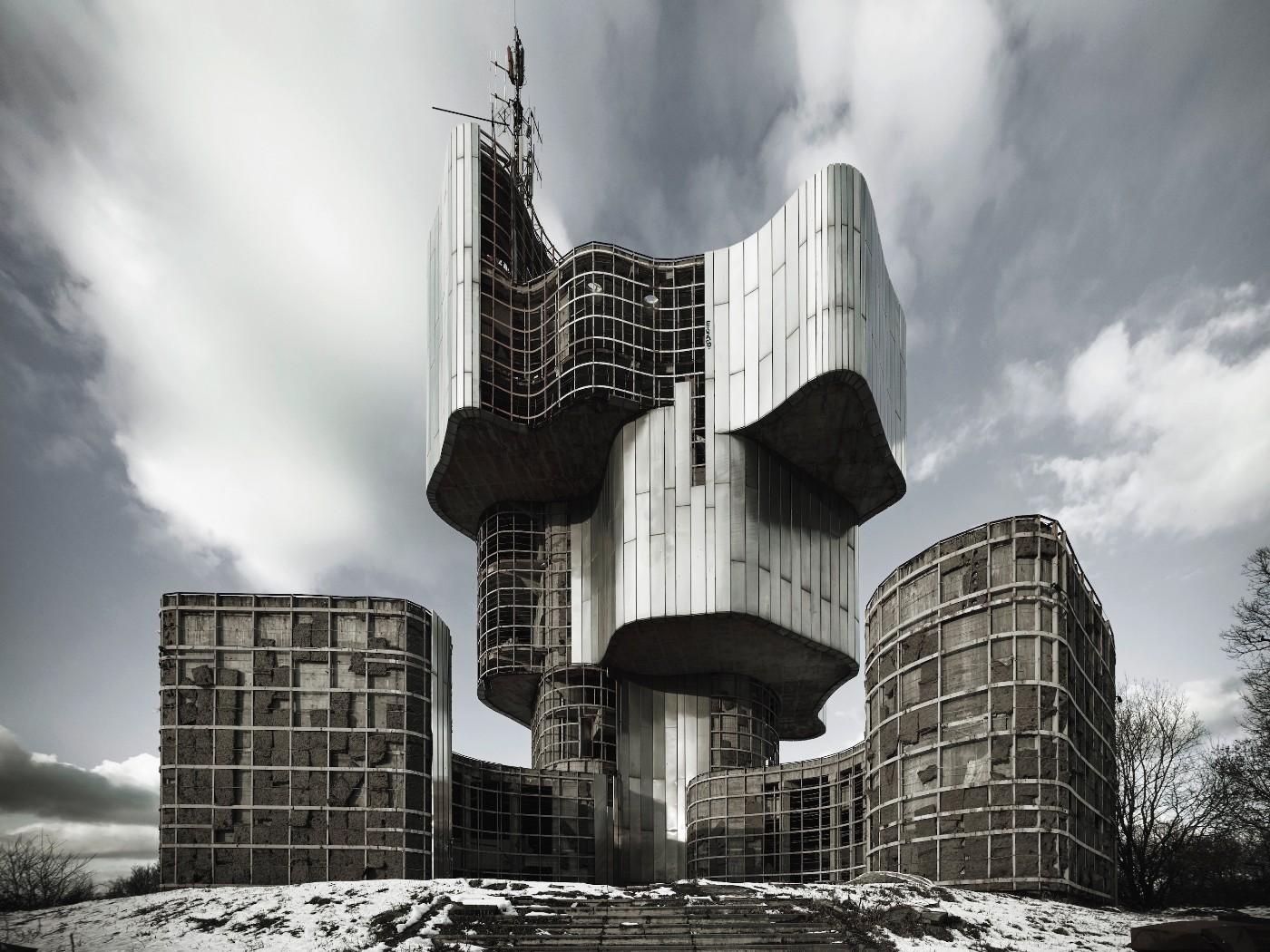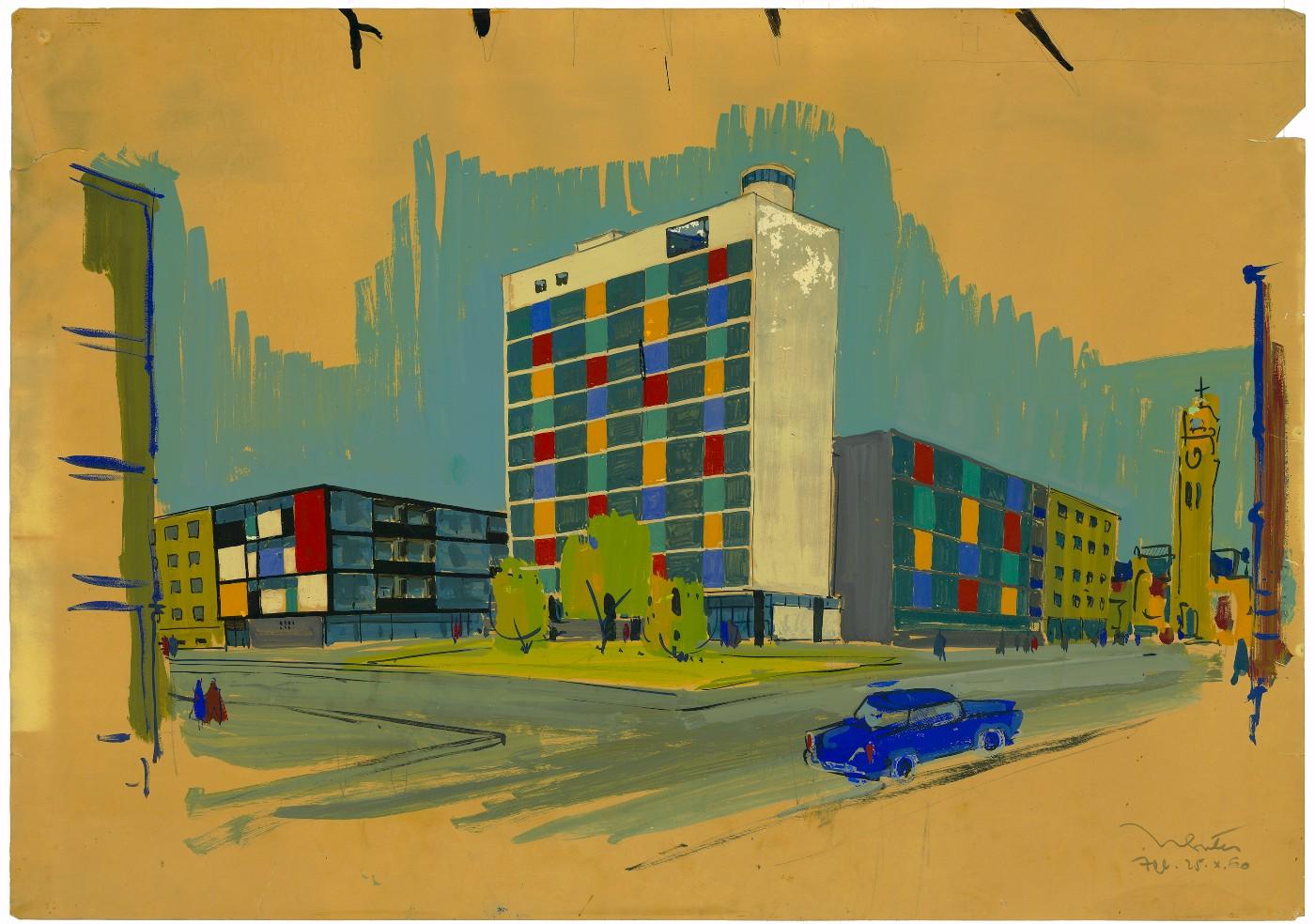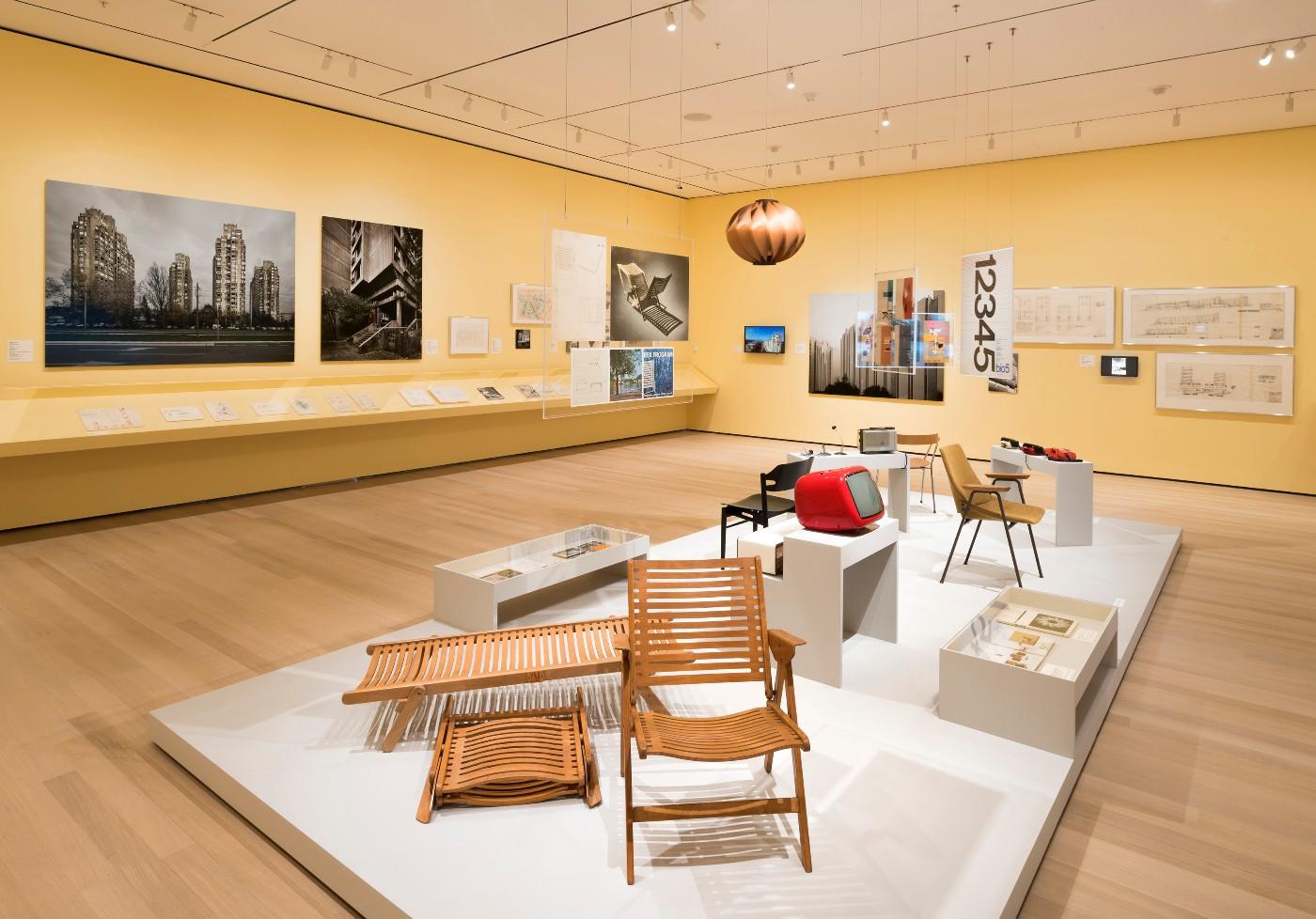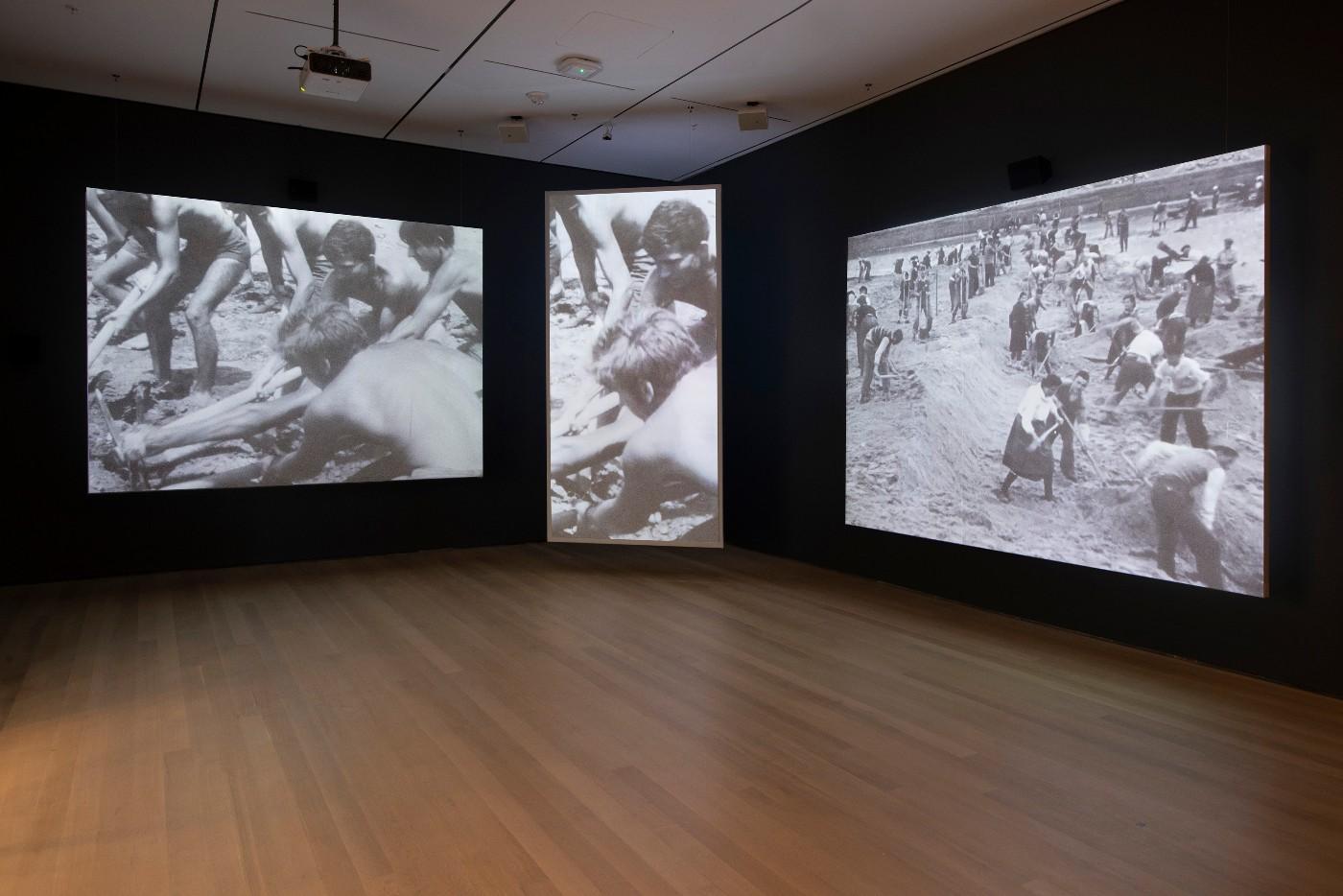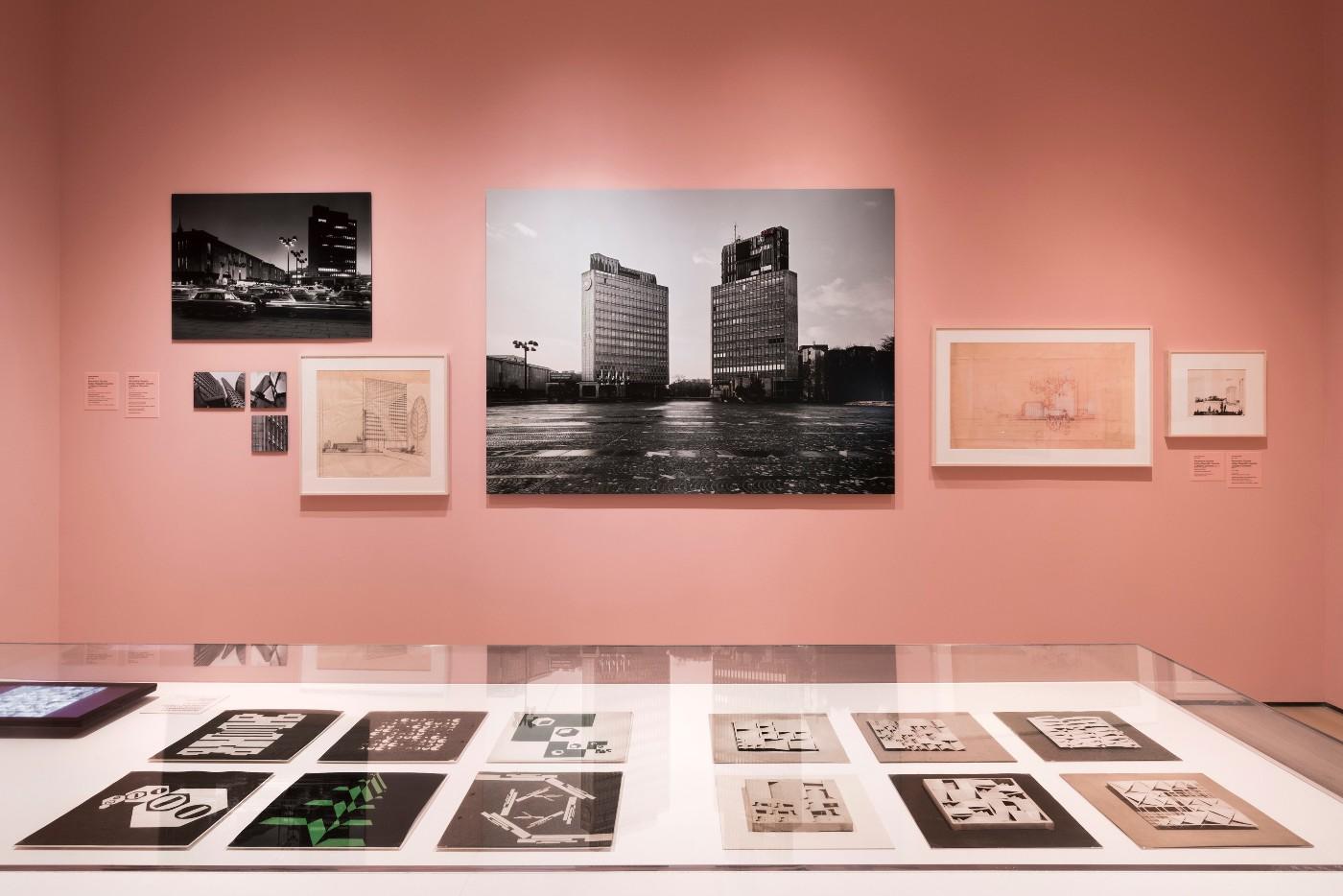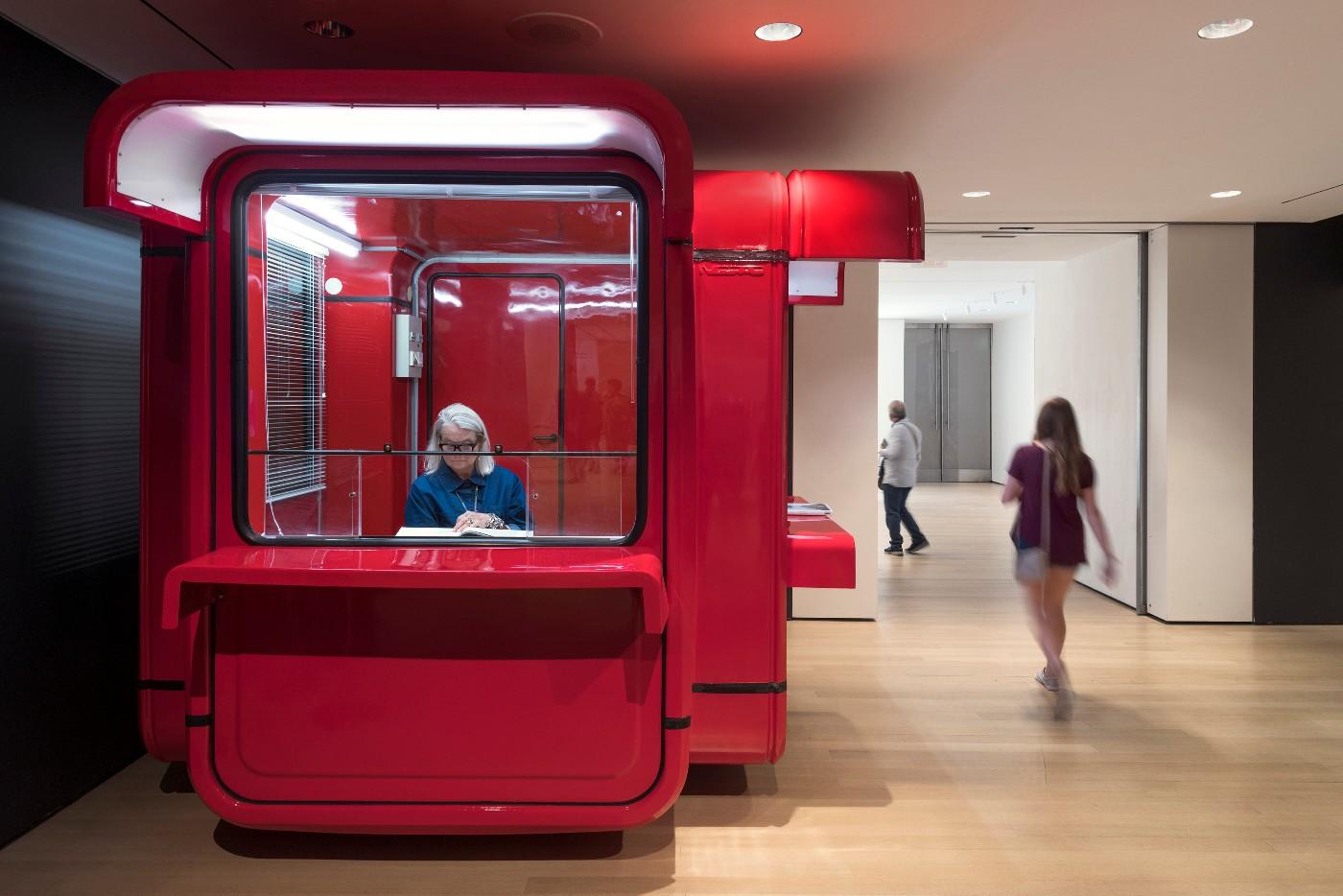The exhibition includes stunning photographs by Valentin Jeck, newly commissioned by MoMA (above), three video installations by renowned filmmaker Mila Turajlić, and contemporary artworks by Jasmina Cibic and David Maljković. Through the themes of "Modernization," "Global Networks," "Everyday Life," and "Identities," the exhibition explores how architecture impacted the country, its people, and the world. A focused look at a distinctive moment in the history of architecture and the world, Toward a Concrete Utopia digs deep and provides complex insights, as well as extraordinary views.

Exhibition poster for the retrospective of architect Janko Konstantinov, 1984. Collage diazotype and tracing paper.
This week the Museum of Modern Art debuted the first major US exhibition devoted to the architecture of Yugoslavia. Toward a Concrete Utopia: Architecture in Yugoslavia, 1948–1980, uses over 400 objects related to architecture and design to examine this critical period in the nation's history.
Having broken with the Soviet Bloc in 1948, Yugoslavia sought to recover from World War II through rapid modernization and economic growth. Under leader Josip Broz Tito, a new postwar nation that welcomed a future of immense growth and a new ethnically integrated society was created. Socialism was a key tenet of this vision, and modern architecture with a utopian goal aimed to achieve this. Part of neither the capitalist West nor the communist East, Yugoslavia and other nations in the Non-Aligned Movement had a unique position in the Cold War years, one that gave them the space to create cultural artifacts outside of this dichotomy and specific to their goals as a country.
Toward a Concrete Utopia: Architecture in Yugoslavia, 1948–1980 is on view at The Museum of Modern Art, New York, through January 13, 2019.




